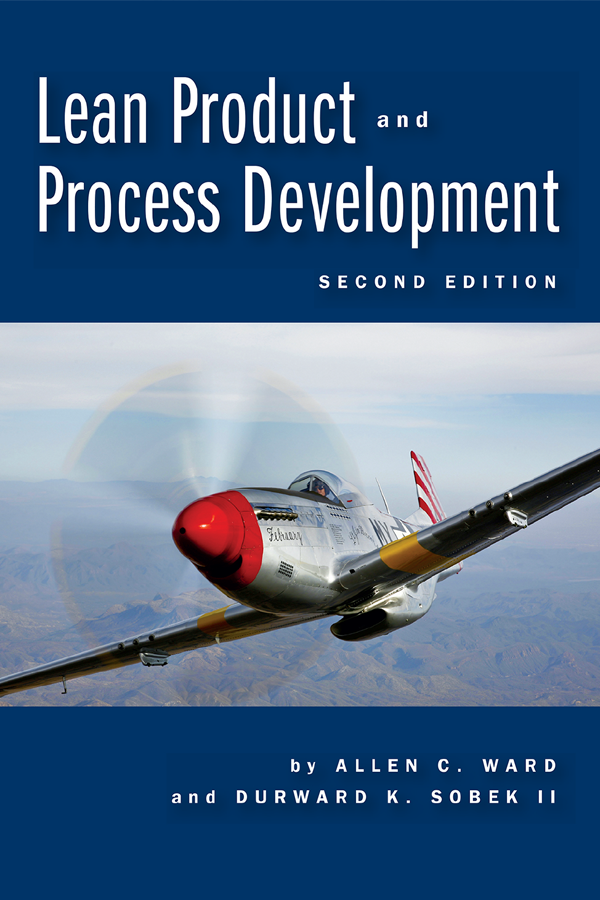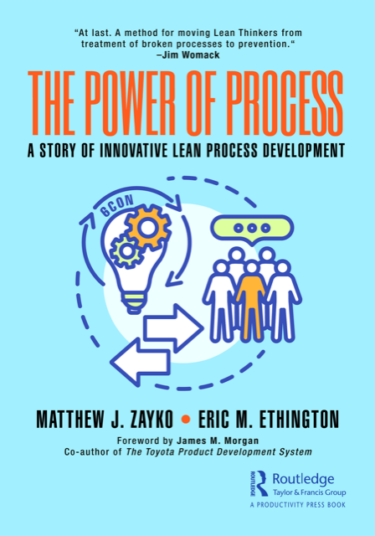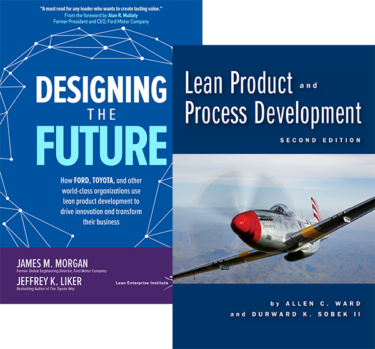Shingo Research and Professional Publication Award recipient, 2008
Despite attempts to interpret and apply lean product development techniques, companies still struggle with design quality problems, long lead times, and high development costs. To be successful, lean product development must go beyond techniques and technologies, conventional concurrent engineering methods, standardized engineering work, and heavyweight project managers.
In the truly groundbreaking first edition of Lean Product and Process Development, Allen Ward showed the way. He delivered—with passion and penetrating insights that cannot be found elsewhere—a comprehensive view of lean principles for developing and sustaining product and process development.
In this second edition, Durward Sobek, professor of Mechanical and Industrial Engineering at Montana State University—and one of Ward’s premier students—edits and reorganizes the original text to make it more accessible and actionable.
This new edition builds on the first by:
- Adding five in-depth and inspiring case studies.
- Including insightful new examples and illustrations.
- Updating concepts and tools based on recent developments in product development.
- Expanding the discussion around the critical concept of set-based concurrent engineering.
- Adding a detailed table of contents and an index, to make the book more accessible and user-friendly.
The True Purpose of Product Development
Ward’s core thesis is that the very aim of the product development process is to create profitable operational value streams, and that the key to doing so predictably, efficiently, and effectively is to create useable knowledge.
Creating useable knowledge requires learning. Ward presented a basic learning model for development. He not only described the technical tools needed to make lean product and process development actually work, but also delineated the management system, management behaviors, and mental models needed.
In his breakthrough text, Ward:
- Asked fundamental questions about the purpose and “value added” in product development so you gain a crystal clear understanding of essential issues.
- Showed you how to find the most common forms of “knowledge waste” that plagues product development.
- Identified four “cornerstones” of lean product development gleaned from the practices of successful companies like Toyota and its partners, and explains how they differ from conventional practices.
- Gave specific, practical recommendations for establishing your own lean development processes.
- Melded observations of effective teamwork from his military background, engineering fundamentals from his education and personal experience, design methodology from his research, and theories about management and learning from his study of history and experiences with customers.
- Changed your thinking forever about product development.
Chapter Downloads:
“The P-51 Mustang—perhaps the finest piston engine fighter ever built—was designed and put into flight in just a few months. Specifications were finalized on March 15, 1940; the airfoil prototype was complete on September 9; and the aircraft made its maiden flight on October 26. Now that is a lean development process!”
—Allen Ward and Durward Sobek, commenting on the development of the P-51 Mustang and its exemplary use of trade-off curves.








Reviews
There are no reviews yet.